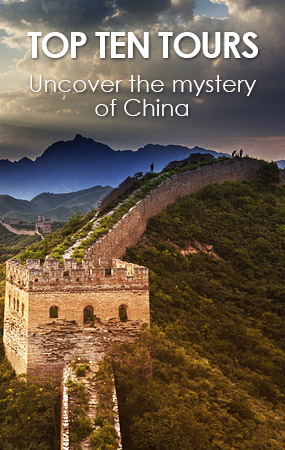Cheongsam (Qi Pao)
The qipao, also known as a Cheongsam, is the traditional Chinese women's dress with distinctive Chinese features. This long, tight gown dress has a wonderful cut and is designed to show a women’s exquisite curvy.
The qipao became popular in the 1930s and 1940s. Experts considered the 1920s as the starting point for the cheongsam, and it reached its pinnacle in the 1930s. It quickly swept from its birthplace in Shanghai to all over China.
In the 1930s and 1940s, Shanghai was deeply influenced by western culture, especially upper-class ladies and senior socialites. They were interested in swimming, playing golf, horseback riding, social life and modern fashion. This trend led to the prevalence of the qipao. Shanghai, enamored by the Western-style way of life, developed the "improved cheongsam”, from the loose cut hiding the body's curves to a cut showing a female’s exquisite curviness. The new cheongsam completely replaced the old design, and become the No.1 feature of Chinese women's fashion.
Development of Qipao Design
A qipao is designed with the neck high, collar closed, and sleeves short or long according to the weather. It is buttoned on the right side, and tightly fitted to the chest, waist and buttocks, with a loose hem.
The qipao is a fashion dress that is designed to combine Western culture and Manchu women’s traditional dress — a mixture of Eastern and Western culture. In a Westerner’s eyes, the qipao is the symbol of the Chinese women's costume. However, in the feudal society of China, it was not allowed for women to expose their curves in public.
The traditional cheongsam was tailored as a straight drop-down line of material, covering the chest, shoulders, waist, and buttocks, so that the curves of the female body were not exposed.
Although the inspiration for the design of the qipao is from Manchu women’s traditional dressing, it is entirely different to Manchu dress (qizhuang). The long gown is the national costume of Manchu women. It is mostly tailored as straight lines, with the body loose and vented on either side. The dress size ratio from chest to waist comparable close. There are a large number of decorations on the rolled cuffs and neckline.
Yellow was the exclusive color of Royalty. For ordinary Chinese people it was taboo to use yellow in ancient China. Manchu women's dress normally had various bright colors, as well as a diversity of materials, such as silk and cotton, with strong contrast in colors.
On the neckline and sleeves there was a special design of colorful lace. Fashion in the late Qing Dynasty was marked by the "18 laces” (that is using 18 types of lace in the dress).
Gown patterns in the Qing Dynasty included dragons, lions, the phoenix, cranes, or plums, orchids, bamboo or chrysanthemum flowers, as well as Chinese characters meaning luck, happiness, and longevity. All patterns had an auspicious meaning.
With the change in times the qipao was tailored to be closer-fitting and more revealing. The modern version of the qipao was first developed in Shanghai in the early 1900s, when the Qing Dynasty came to an end and people were eager to change the conservative dress for a more modern style. Slender and close-fitting with a high cut, the modern qipao has a strong contrast with the traditional qipao.
The modern design is especially focused on the figure of women, and as such is highly popular as a dress for developed society. As Western fashions changed, the basic cheongsam design has changed too, introducing high-necked sleeveless dresses, bell-like sleeves, and black lace frothing at the hem. By the 1940s, the fabric of the cheongsam had diversified. It came in transparent black, beaded bodices, with matching capes, and even in velvet.

